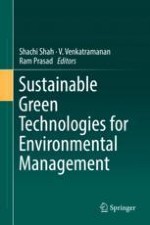2019 | OriginalPaper | Buchkapitel
15. Role of Vermicomposting in Agricultural Waste Management
verfasst von : Charu Gupta, Dhan Prakash, Sneh Gupta, Monica Azucena Nazareno
Erschienen in: Sustainable Green Technologies for Environmental Management
Verlag: Springer Singapore
Aktivieren Sie unsere intelligente Suche, um passende Fachinhalte oder Patente zu finden.
Wählen Sie Textabschnitte aus um mit Künstlicher Intelligenz passenden Patente zu finden. powered by
Markieren Sie Textabschnitte, um KI-gestützt weitere passende Inhalte zu finden. powered by
